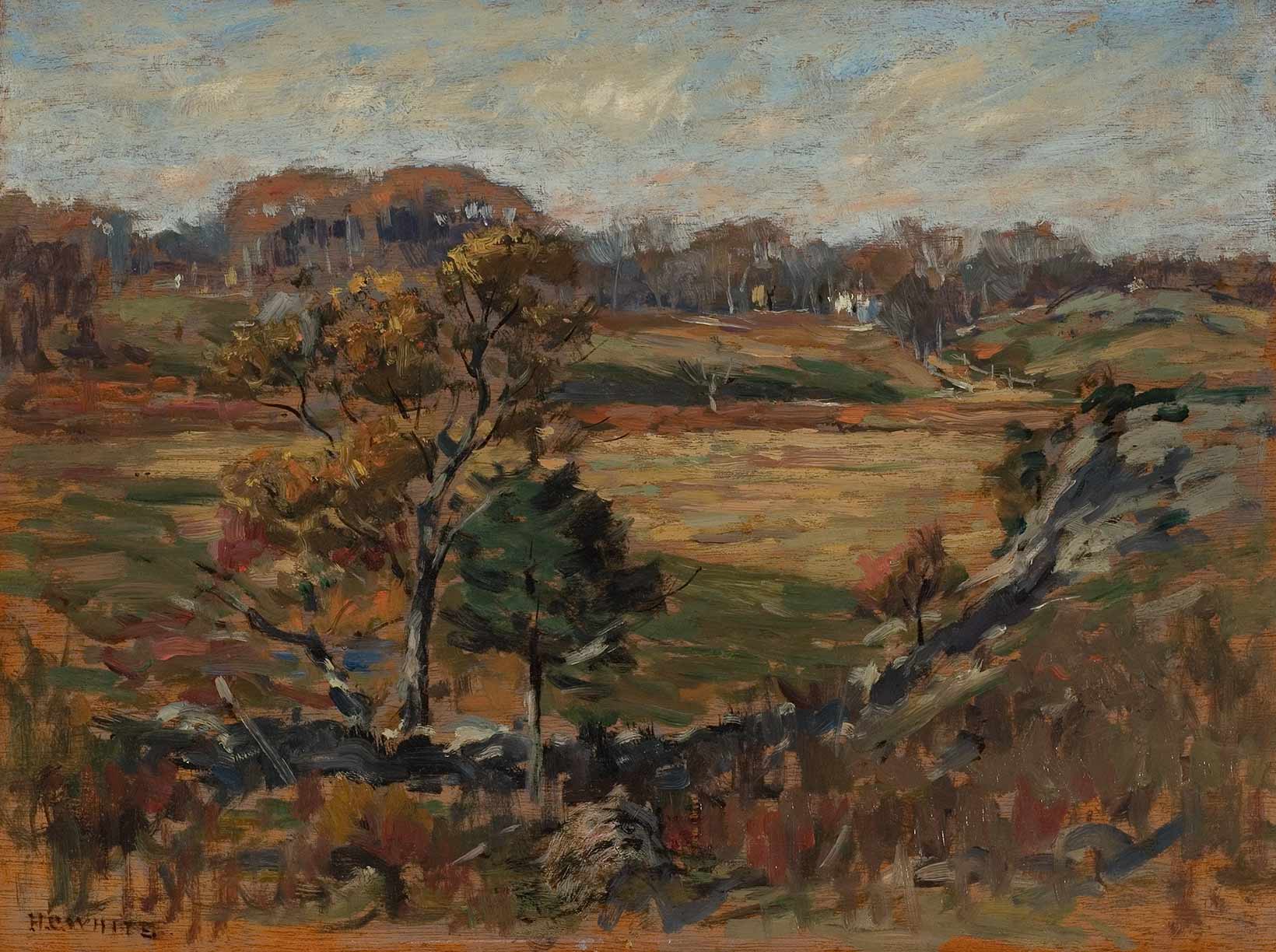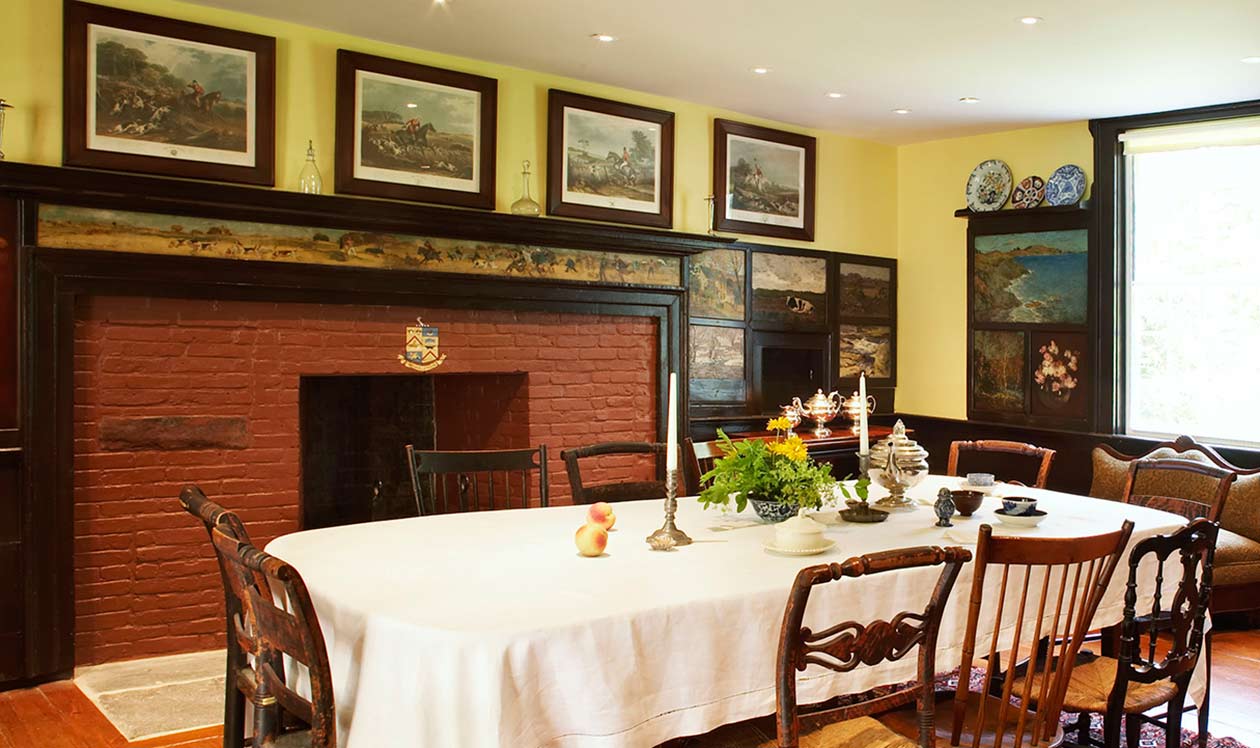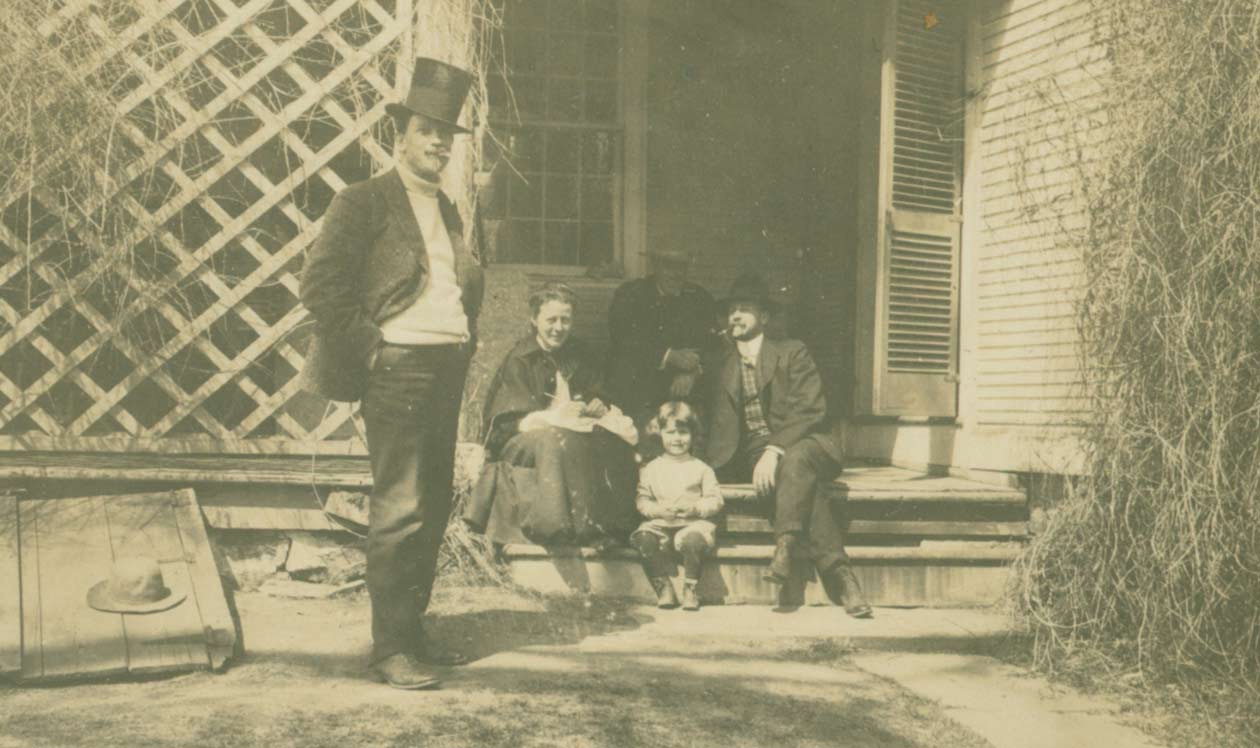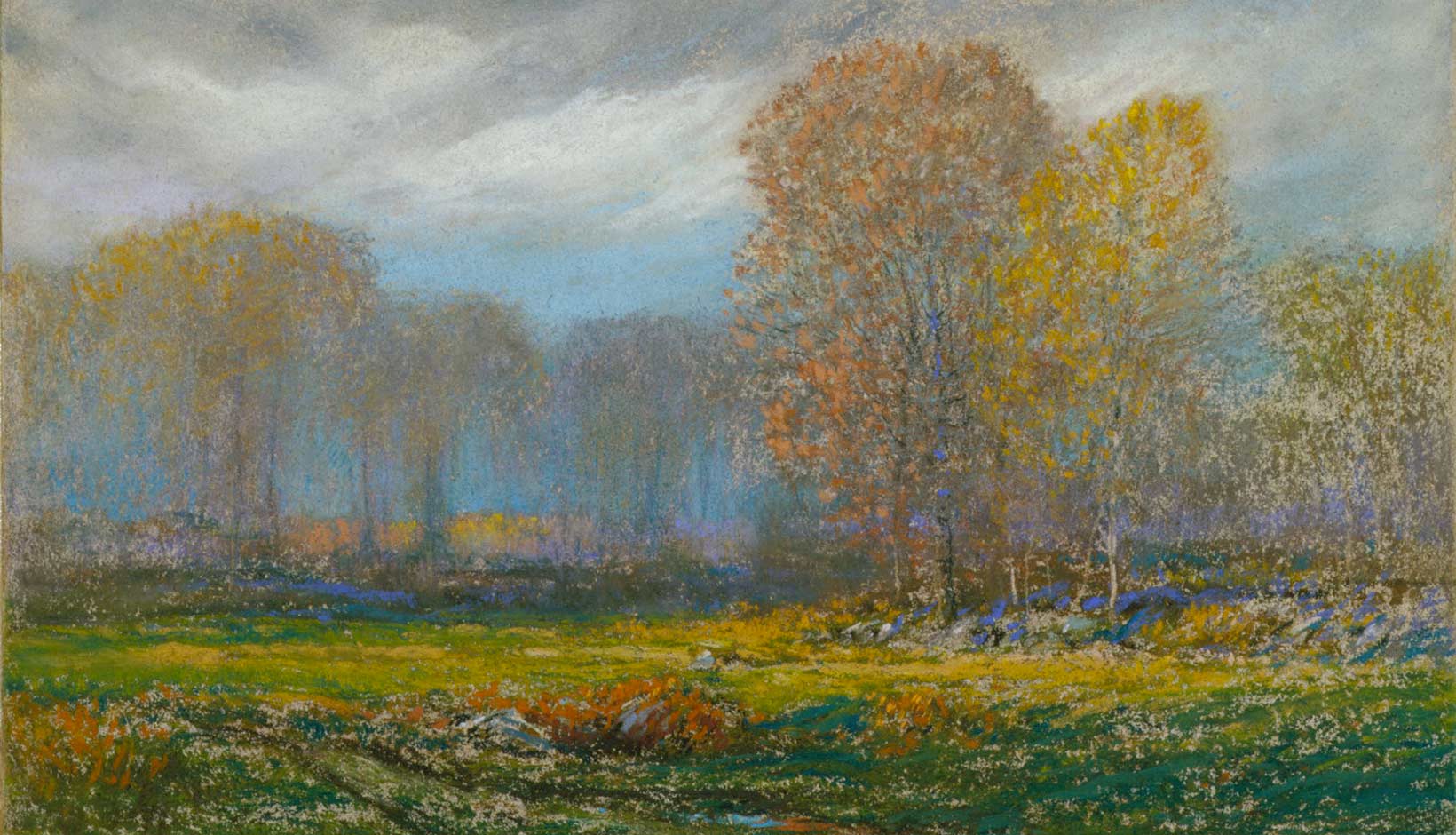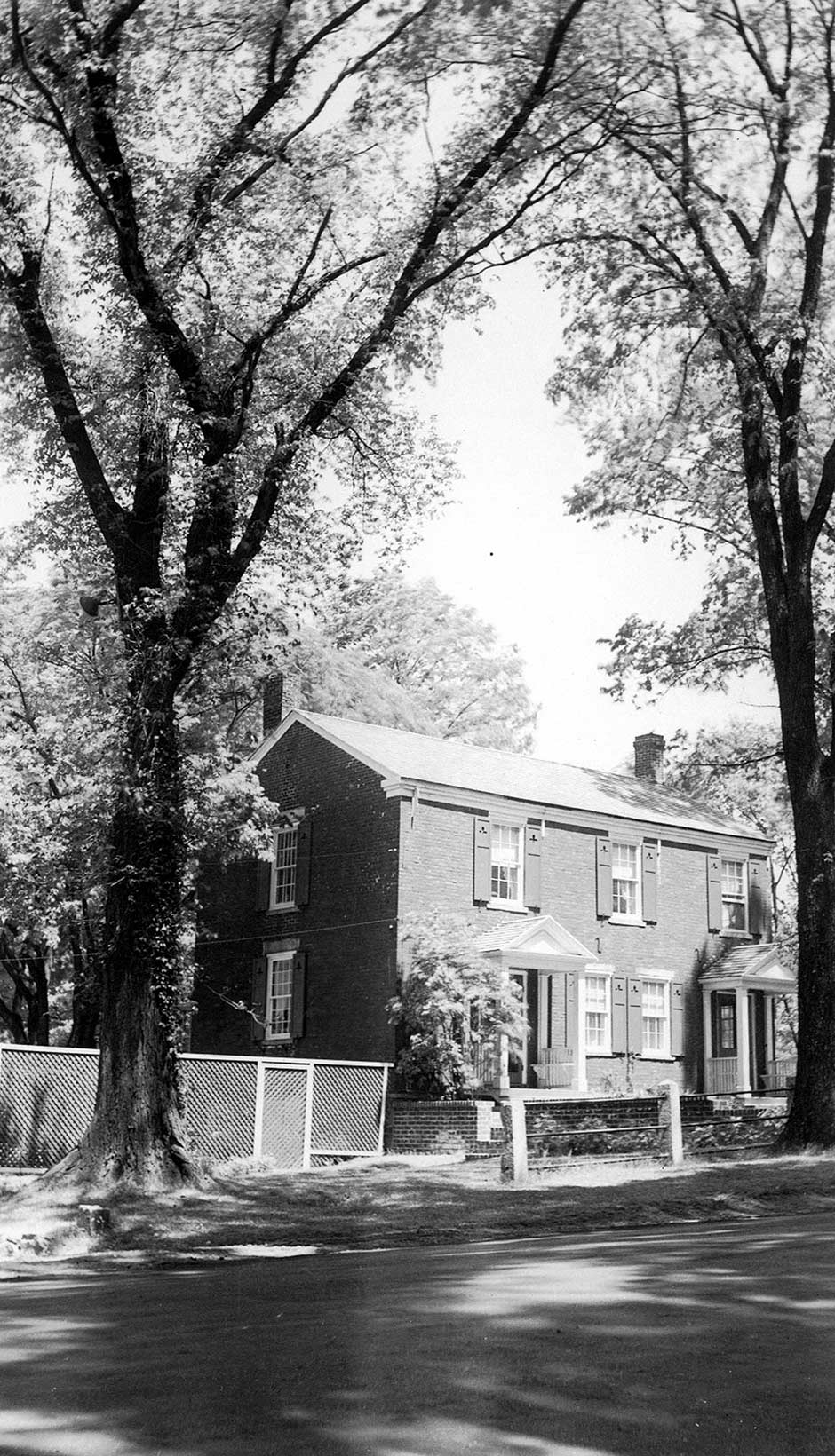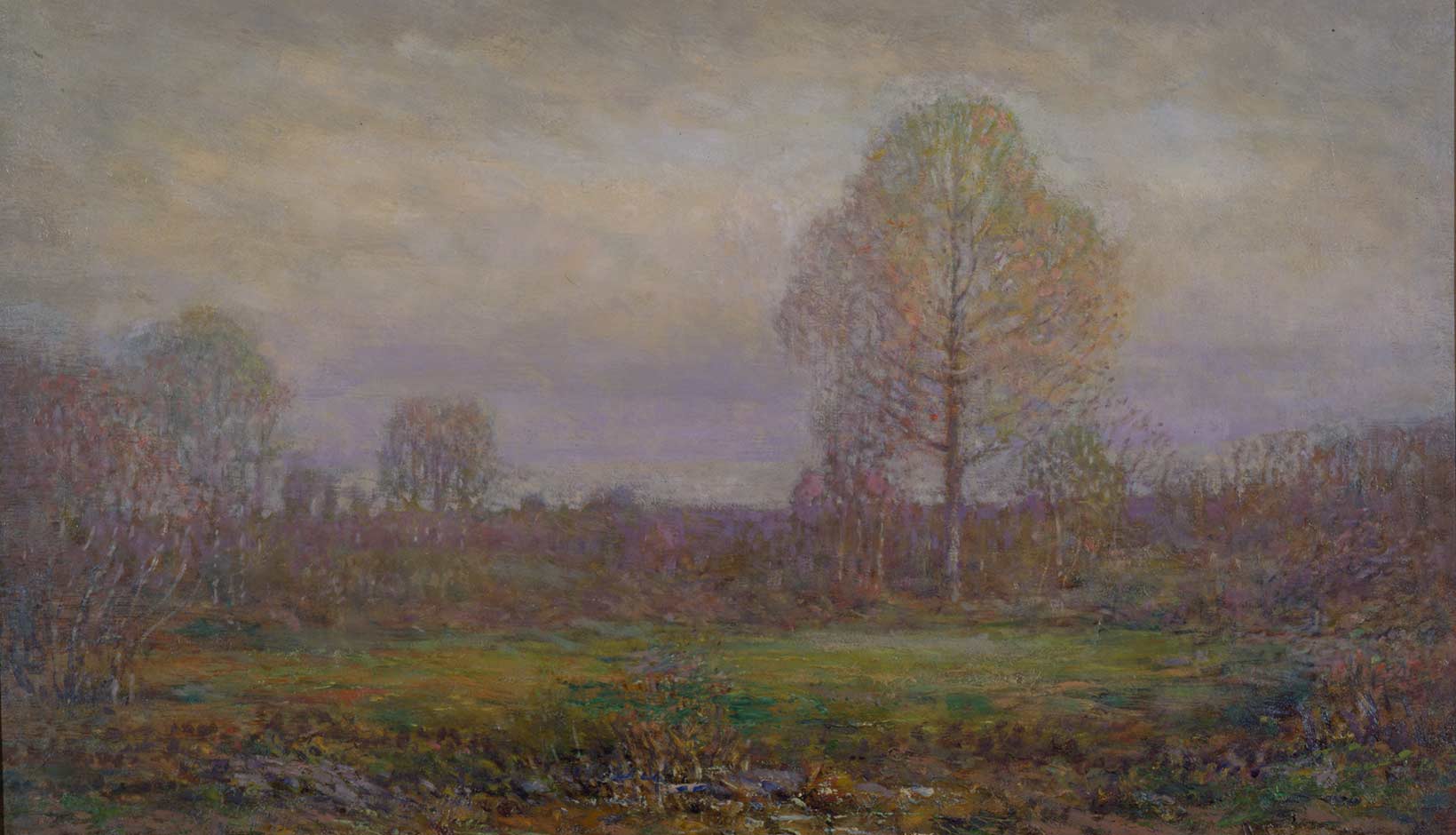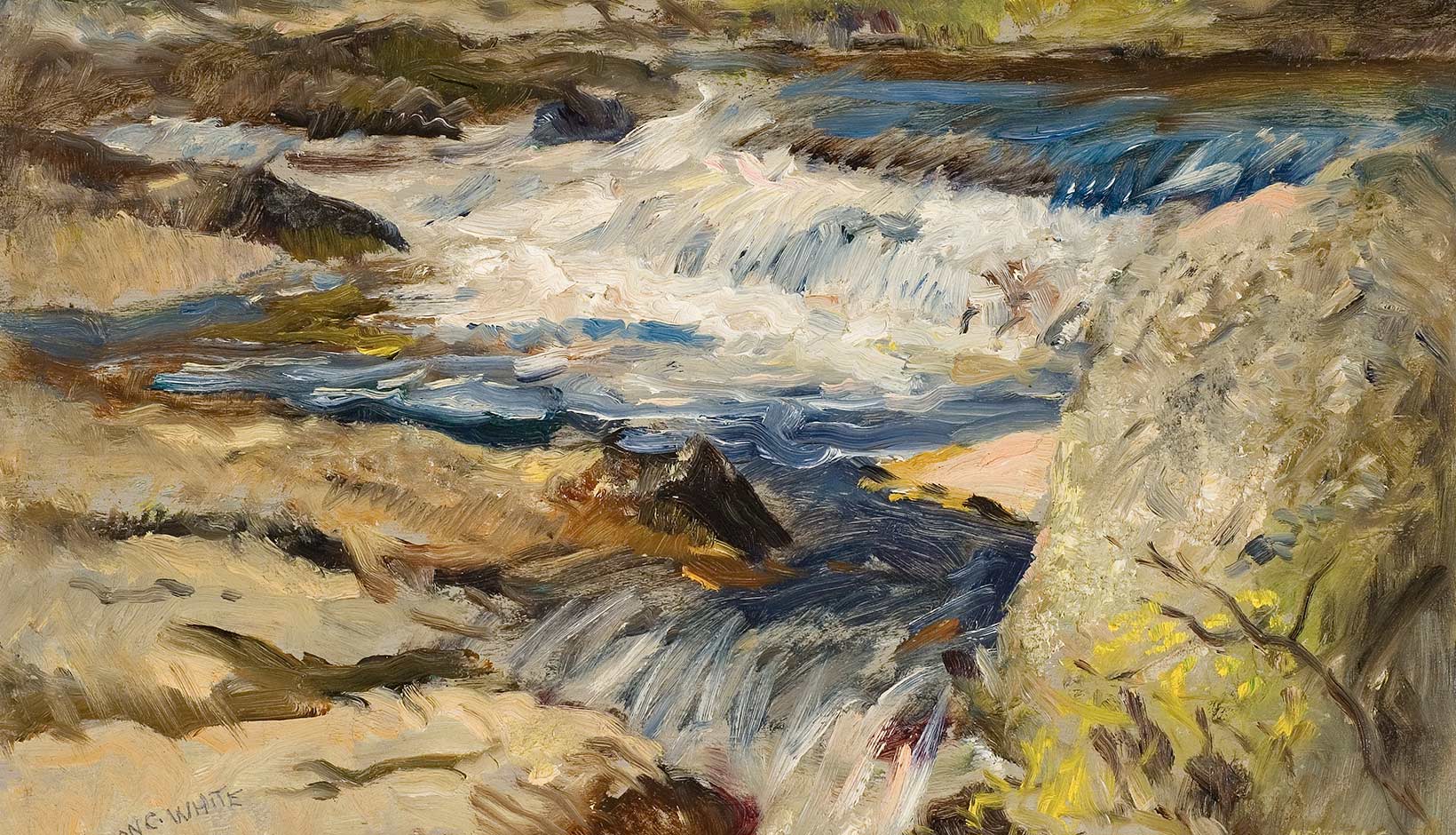COLLECTIONS
In Situ: The Painted Panels
- Museum Hours: Tuesday through Sunday, 10am to 5pm
Henry C. White (1861 – 1952)
Autumn Landscape
Colors are grayed in the manner of Tonalism, but the sketchy brushwork and lack of detail indicate a painting done en plein air rather than one constructed and smoothly “finished” in a studio. Space is implied in the traditional ways that some Tonalists retained: forms are smaller and blurrier near the horizon line; and there are clear demarcations of foreground, middle, and background.
More reflective of Impressionism, however, is the forward and off-center placement of the two focal trees, the brightness of the empty space to their right, the heaviness of the sky, and, most of all in this instance, the prominent integration of geometry into the landscape: a semicircle is defined by the sweeping curve of the stone wall and horizontal band of brown. The result is a landscape with a strong sense of place that can also be appreciated for the artist’s eye for color, texture, and design.
HENRY C. WHITE (1861-1952)
AUTUMN LANDSCAPE, C. 1904 (INSTALLED 1954)
OIL ON WOOD PANEL
GIFT OF THE ARTIST
A Favorite Season
Henry White loved best the two seasons of the year that are the most in flux – spring and fall – so his autumnal “calling card” in the Griswold House dining room represents him well. His portrayal exhibits a synthesis of the Tonalism he learned from Dwight Tryon and admired in work at Old Lyme with the Impressionism that Childe Hassam introduced there in 1903.
White’s panel was installed in 1954 – two years after White died and perhaps as long as a half century after he painted it – as a tribute to him as an artist and longtime friend to the Lyme Art Colony.
Removal of a china cabinet in the corner made room for panels by both Henry White and his son Nelson.
(Center) Mrs. Henry C. White with her son, Nelson, at the Griswold House
Henry White had studied with Dwight Tryon, a fellow Hartford native whom he later memorialized in a book, and in New York at the Art Students League. In 1889 he became for a time the drawing instructor at Hartford High School. He and his family first summered in Old Lyme in 1903, boarding that year with Florence Griswold, and afterward renting an abandoned brick store building nearby. White sheltered his Knox automobile, the first car in Old Lyme, in a barn opposite the “Barbizon Oak,” so-called because it was so often portrayed by Henry Ward Ranger and the other Old Lyme Tonalists. White and his family moved to a place of their own in Waterford in 1907, but he exhibited annually with the Lyme Art Association until 1921.

